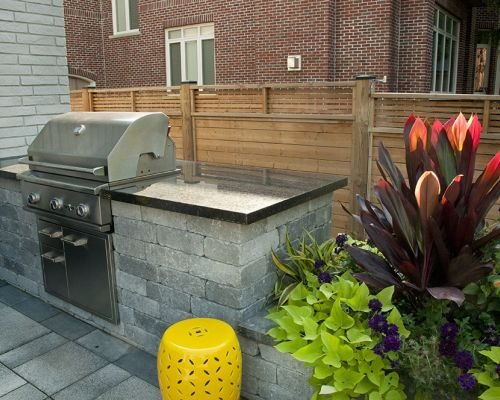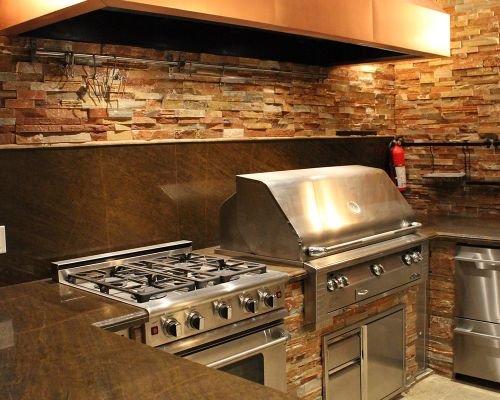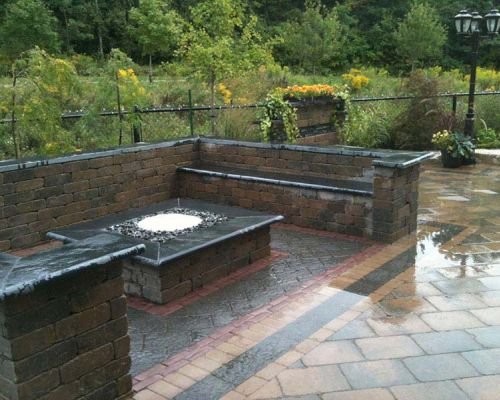Imagine transforming Toronto yards into personal sanctuaries that blend breathtaking beauty with environmental responsibility—yet how do you balance aesthetic appeal, sustainability, and client satisfaction seamlessly? This work goes beyond simple landscaping; it’s about crafting outdoor retreats that serve as peaceful escapes, lively gathering spots, or ecological havens amidst urban life. The secret lies in thoughtful design choices: native plants that thrive naturally, eco-friendly materials, stormwater management, and resilient features tailored to Toronto’s changing seasons. But creating such spaces demands more than just good ideas—it requires meticulous planning, clear communication, and adaptability to unforeseen challenges. As future trends like green roofs, smart irrigation, and biodiversity-focused landscapes emerge, the potential for sustainable outdoor spaces in Toronto becomes even more promising. Could these innovative approaches redefine what it means to enjoy and preserve natural beauty within the city’s vibrant fabric?
Transform Your Toronto Outdoor Space with Expert Landscaping
Looking to elevate your outdoor living in Toronto? Toronto Landscape & Design (TLD) offers stunning solutions including natural stone features, water gardens, irrigation systems, and retaining walls. Our award-winning designers take everything into consideration to create personalized landscapes that suit your style and needs. Whether you’re dreaming of a complete backyard makeover or subtle enhancements, our team is dedicated to bringing your vision to life. Discover how our expertise can turn your outdoor space into a beautiful retreat. For consultations, contact mike@torontolandscapedesign.com or call 1.416.644.0499. Explore more about our services and see how we can transform your backyard with a backyard makeover.

Transform Your Toronto Yard into a Personal Sanctuary Amidst City Life
Transforming Toronto yards into inviting outdoor retreats is about more than just aesthetic upgrades; it’s a way to create personal sanctuaries amid the city’s hustle and bustle. As urban living becomes busier, the value of a well-designed outdoor space grows. A carefully planned yard can serve as a peaceful escape, a lively entertaining area, or a natural haven for reconnecting with nature—all without leaving Toronto’s vibrant streets.
This process involves thoughtful design choices that balance beauty with environmental responsibility. It’s not just about planting flowers or adding a patio—it’s about selecting native plants that thrive with minimal water, eco-friendly materials that reduce waste, and stormwater management features that support local ecosystems. These elements ensure the space remains sustainable and easy to maintain over time, making it a true long-term investment.
As awareness around climate change and ecological health increases, so does the importance of sustainable landscaping. Homeowners now seek outdoor spaces that do more than look good—they actively contribute to the environment. Incorporating recycled materials, native flora, and water-efficient features not only enhances the aesthetic but also supports Toronto’s ecological resilience. The goal is to craft yards that stand up to seasonal changes while fostering local biodiversity.
Understanding what homeowners want is key. Some prioritize low-maintenance native gardens, while others envision lively outdoor entertainment areas or lush native landscapes. Asking the right questions during the planning phase helps tailor designs to individual lifestyles and values. When these visions come to life, they foster trust and ensure the outdoor retreat feels both personal and functional.
Designing with local conditions in mind is essential. Native plants naturally adapt to Toronto’s climate, requiring less water and fewer chemicals. Eco-conscious materials like permeable paving and recycled stone not only look good but also help manage stormwater and reduce environmental impact. These choices create landscapes that are visually stunning and resilient enough to handle seasonal weather fluctuations.
From initial concept to final installation, every step is about seamless integration of design principles and environmental responsibility. Careful planning, ongoing communication, and attention to detail ensure the finished yard isn’t just beautiful but also sustainable and durable. Ultimately, a well-executed transformation offers homeowners a space they’ll cherish for years—one that enriches their lives and supports Toronto’s urban landscape.
Strategies to Achieve Beautiful, Sustainable Outdoor Retreats in Toronto
Creating stunning and sustainable outdoor retreats in Toronto involves a thoughtful balance of innovative design and eco-conscious practices. Native plants are a cornerstone of this approach, thriving naturally in our climate and requiring minimal water, fertilizers, and maintenance. Incorporating these plants not only reduces ongoing care but also boosts local biodiversity by attracting pollinators, birds, and beneficial insects, which in turn supports the health of the entire landscape. Pairing native flora with eco-friendly materials like permeable pavers or recycled stone helps manage stormwater naturally, reducing environmental impact while enhancing visual appeal.
Design features such as water elements, fire pits, and smart lighting elevate the aesthetic and functionality of outdoor spaces. Solar-powered lights and water-saving fixtures align with sustainable goals, creating inviting environments that are both beautiful and environmentally responsible. Using recycled or biodegradable materials for pathways and furniture further minimizes waste, ensuring the entire landscape supports ecological health over the long term.
Resilience is key to sustainable design. Durable, eco-conscious materials and practices that withstand Toronto’s seasonal changes help maintain the landscape’s integrity and beauty. Features like rain gardens, green roofs, and stormwater management systems prevent runoff and support local ecosystems, making yards more resilient and less resource-dependent. Layering textures, colors, and lighting adds visual interest without compromising sustainability, making the space inviting and vibrant across seasons.
Understanding client preferences is central to refining these strategies. Whether homeowners seek low-maintenance native gardens or sleek, modern outdoor living areas, tailoring the design ensures spaces are both functional and aligned with personal values. This personalized approach encourages ongoing care and fosters a sense of ownership, turning a landscape from a simple yard into a genuine retreat.
By integrating native plants, eco-friendly materials, resilient features, and client-driven customization, landscape design in Toronto can deliver outdoor retreats that are as beautiful as they are sustainable. These landscapes not only elevate curb appeal but also support local ecology and stand the test of time. When executed thoughtfully, they become spaces where beauty, practicality, and environmental responsibility coexist seamlessly, enriching both homeowners’ lives and the city’s natural fabric.

Applying Core Design Principles for Stunning, Functional Landscapes
Applying core design principles transforms a yard into an inviting and functional outdoor retreat. It begins with crafting a layout that respects the natural flow of the space, making navigation intuitive and seamless. Pathways should guide movement smoothly between zones, while focal points like a fire pit or water feature serve as visual anchors that naturally draw people in and encourage gathering. Mixing open areas with textured plantings and varied materials adds depth and keeps the landscape engaging year-round.
Choosing eco-friendly materials and native plants forms the foundation of a sustainable design that doesn’t sacrifice visual appeal. Native plants thrive naturally in Toronto’s climate, requiring less water, fertilizers, and maintenance. When thoughtfully integrated, they create a lush, resilient landscape that remains vibrant across seasons. Permeable pavers, recycled stone, and biodegradable mulches not only enhance aesthetics but also support stormwater management, reducing runoff and environmental impact.
Good design extends to lighting and texture, which enhance usability and add visual interest. Layered lighting—such as solar lamps or soft LEDs—creates ambiance and improves safety after dark, while varied textures and colors in plantings and materials prevent the space from feeling flat. These details also support sustainability by reducing energy consumption and encouraging outdoor use at different times of day.
Focal points anchor the overall design and foster natural gathering spots. A water feature or native plant bed can serve as a centerpiece that guides the flow of the landscape, while fire pits and outdoor fireplaces provide warmth and a cozy atmosphere. When integrated seamlessly, these elements elevate the outdoor experience, inviting homeowners to enjoy their space more often, whether for relaxing evenings or lively gatherings.
Designing with practicality in mind involves planning zones that match the homeowner’s lifestyle, ensuring each element serves a purpose without clutter. Clear communication during the planning and installation phases helps align expectations, allowing for adjustments that refine the final outcome. Regular site inspections during installation ensure the project stays true to the plan, producing a landscape that’s both beautiful and effortless to maintain.
Attention to detail during installation makes all the difference. Proper placement of native plants, water features, and other elements is vital to realizing the envisioned look and functionality. Addressing issues early—such as adjusting plantings or verifying materials—ensures the finished yard closely matches the original design intent, delivering a high-quality result.
Flexibility remains essential throughout the process. Unexpected site conditions, weather delays, or budget shifts can arise, but quick adaptation keeps the project on track. Open dialogue with clients about adjustments fosters transparency and turns potential setbacks into opportunities for creative problem-solving. This collaborative approach ensures the final landscape exceeds expectations.
By applying thorough site assessments, maintaining open communication, selecting eco-friendly materials, coordinating carefully, and staying adaptable, landscape professionals turn concepts into stunning, sustainable yards. These spaces become more than just visual upgrades—they are long-lasting retreats that support the homeowner’s lifestyle and contribute positively to Toronto’s urban environment.
Turning Design Ideas into Successful Toronto Backyard Transformations
Turning landscape design ideas into successful backyard transformations begins with a clear understanding of each site’s unique conditions. Every Toronto yard presents its own challenges—be it soil quality, existing vegetation, or microclimates—that influence the best approach. Conducting a thorough assessment early on ensures your design is both practical and sustainable. This insight guides the development of detailed plans and drawings, creating a clear roadmap that balances aesthetics, functionality, and environmental responsibility.
Working closely with clients throughout the process is essential. Regular updates and open communication help align your vision with their expectations, making the project more enjoyable and ensuring everyone’s needs are met. Sharing progress, discussing material choices, and being receptive to feedback foster trust and allow for adjustments that keep the project on track. When homeowners feel involved from start to finish, they develop a stronger sense of ownership and pride in their transformed space.
Native plants and eco-friendly materials are central to bringing these designs to life. Native species suited to Toronto’s climate require less water and maintenance, while supporting local pollinators and wildlife. Incorporating sustainable materials like permeable pavers or recycled stone not only enhances the visual appeal but also improves stormwater management, reducing runoff and environmental impact. These choices create landscapes that are resilient, cost-effective, and easier to care for over time.
The installation phase demands careful coordination. Proper placement of native plants, water features, and other elements is vital to achieving the envisioned look and function. Regular site inspections during installation help catch issues early—adjusting plantings or verifying materials to ensure fidelity to the plan. Maintaining high standards at this stage guarantees the final yard closely matches the original design, delivering a quality result that meets expectations.
Flexibility remains key throughout the project. Unexpected site conditions, weather delays, or budget changes can surface, and adapting quickly keeps things moving smoothly. Sometimes, it’s necessary to rethink a material choice or tweak a feature to better suit the space. Clear communication about these adjustments keeps homeowners informed and involved, turning potential setbacks into opportunities for creative solutions. With this collaborative approach, the final landscape becomes a true reflection of both the design vision and the homeowner’s lifestyle.

Embracing Future Trends for Sustainable and Resilient Outdoor Spaces in Toronto
The future of sustainable outdoor spaces in Toronto is poised to be more innovative and environmentally conscious than ever before. Permeable paving materials, which allow rainwater to naturally infiltrate the ground, are becoming standard. They help reduce runoff and support groundwater recharge, aligning with Toronto’s efforts to better manage stormwater amid changing climate patterns. Landscape designs will increasingly incorporate green infrastructure solutions that work harmoniously with nature rather than against it, creating resilient and adaptive outdoor environments.
Green roofs and living walls are gaining momentum, transforming unused rooftop spaces into vibrant retreats that double as ecological assets. These features improve insulation, air quality, and biodiversity, making the most of limited urban space while contributing to climate resilience. Smart irrigation systems equipped with sensors and weather data optimize water use, ensuring plants receive what they need without waste—a crucial step as Toronto faces growing water demands and drought risks. Such technology makes sustainable landscaping more accessible and efficient.
Advancements in outdoor lighting and energy solutions are making eco-friendly choices easier for homeowners. Solar-powered lamps and energy-efficient LEDs enhance safety and ambiance after dark while reducing electricity consumption. Meanwhile, the development of biodegradable and recycled materials for pathways, furniture, and decorative features continues to lower the environmental footprint of landscape projects. These innovations support a future where outdoor retreats are not only beautiful and functional but also resilient and resource-efficient.
Biodiversity-focused landscaping, emphasizing native plants and habitat creation, will play a vital role in urban design. Toronto’s native flora, well-adapted to local conditions, supports pollinators, birds, and beneficial insects, fostering a healthier ecosystem. Integrating these plants into residential landscapes requires less maintenance, fewer chemicals, and a smaller ecological footprint. As climate challenges intensify, landscapes that prioritize drought-tolerance, stormwater management, and habitat preservation will become the norm, ensuring long-term resilience.
Staying ahead of these emerging trends means embracing continuous learning and innovation. Landscape professionals who adapt to new technologies and sustainable practices will lead the charge in creating outdoor spaces that serve both people and the planet. By blending cutting-edge solutions with thoughtful design, Toronto’s yards will evolve into more than just aesthetic enhancements—they will be vital parts of the city’s ecological future, capable of weathering climate change while enriching residents’ lives.